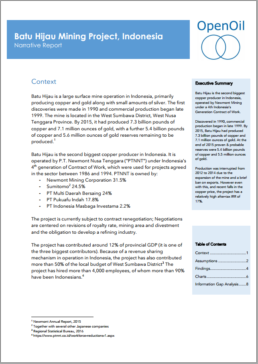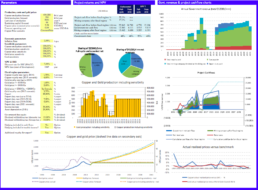Medco acquisition toward Batu Hijau Newmont has buzzed media news in last few months. The transaction that reached more than 8 trillion IDR was mentioned as the biggest acquisition transaction in South East Asia. Although controversial, considering the obligation of divestment, the Medco acquisition marks a new phase of the majority ownership of Batu Hijau project by national companies.
Batu Hijau mining is the biggest copper production in Indonesia. Besides copper, this site also produces gold and a few silver. Located in the West Sumbawa Regency, West Nusa Tenggara, this site was operated by PT Newmont Nusa Tenggara (PTNNT) for more than 20 years through the fourth generation of the contract of work. PTNNT is mainly owned by American mining company, Newmont (31.5%) and Sumitomo, a Japan company, with 24.5%. Recently, PTNNT changes its name into PT Amman Mineral Nusa Tenggara.
PWYP Indonesia working with Open Oil developed a financial model for Batu Hijau by utilizing the available public information, especially information from the annual report of PTNNT, and contract document access through the website of securities commission and capital market where PTNNT is listed. Through this modeling, public can get information about the total budget of mining development, volume of production, company profit, and state revenue. Not only showing the historic data, this model also provides projection data until the closing of the mining site.
Main findings:
- The Batu Hijau mining project is considered as quite profitable, with the internal rate of return (IRR) value reached 17%.
- The government gets revenue (net cash flow) about 48%, while the company gets revenue 52%.
- Due to hedging during 2004-2006 amounting 931 million USD that reported by Newmont, the state estimated suffered up to 388 million USD of potential loss.
- Royalty tariff changes applied in 2015 as the result of Contract of Work negotiation mandated by Law no 4/2009 is predicted to increase the state revenue up to three times.
This model can be accessed and downloaded online in open data format. The user can change or simulated a number of parameters (production, price, tax rates, etc.) in the model and get a direct result. This enables user to compare several scenarios to get the best fiscal scenario. As the complementary of the model, there is also a narrative report that explains detailed economic parameter and fiscal regime and assumption that used in the model.

